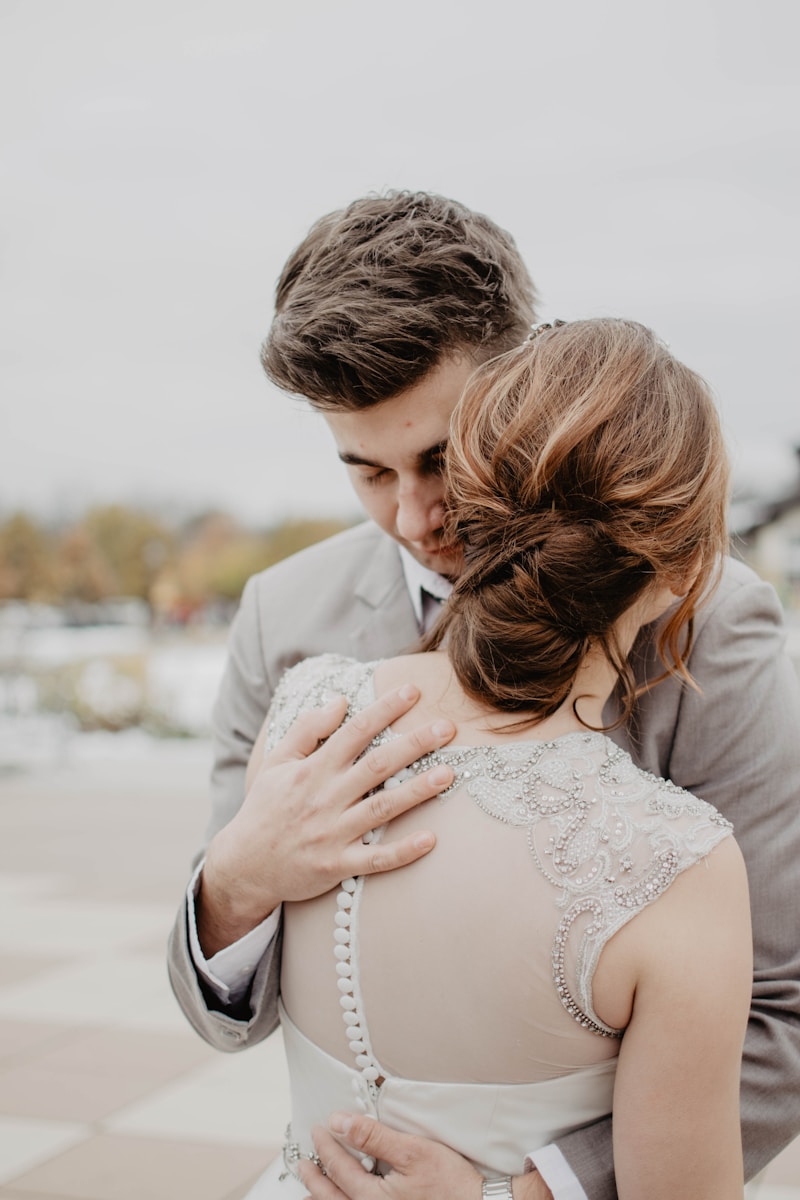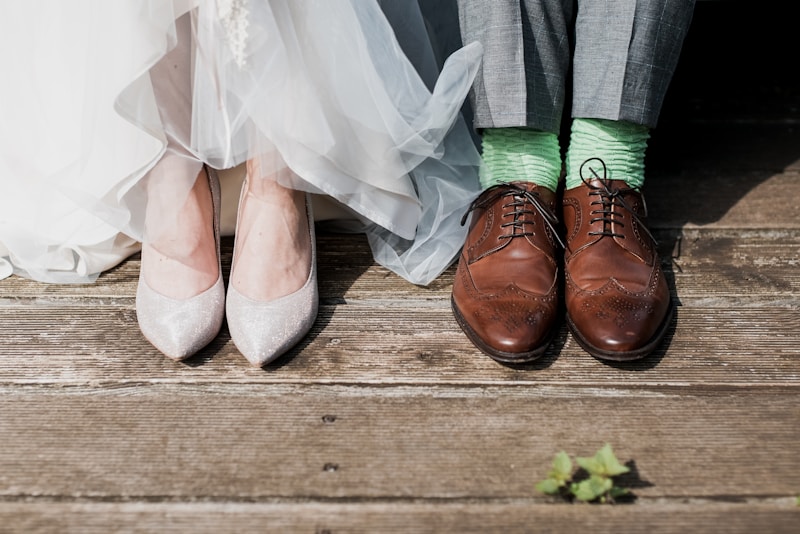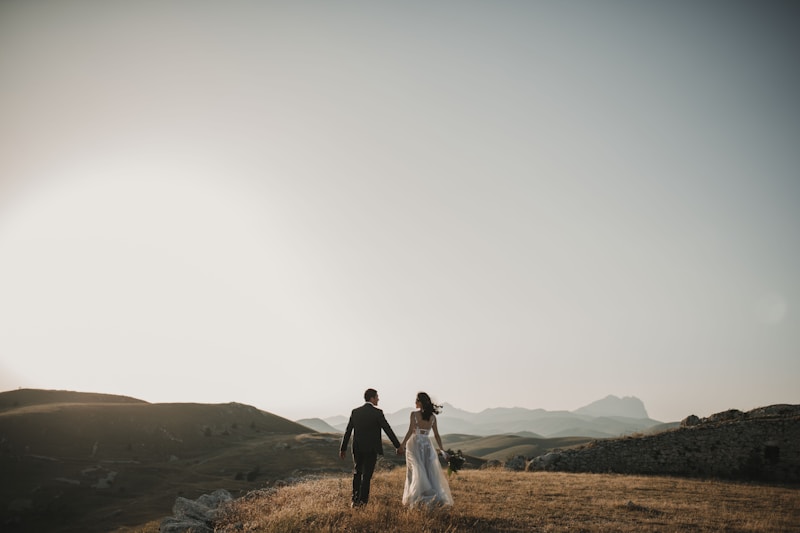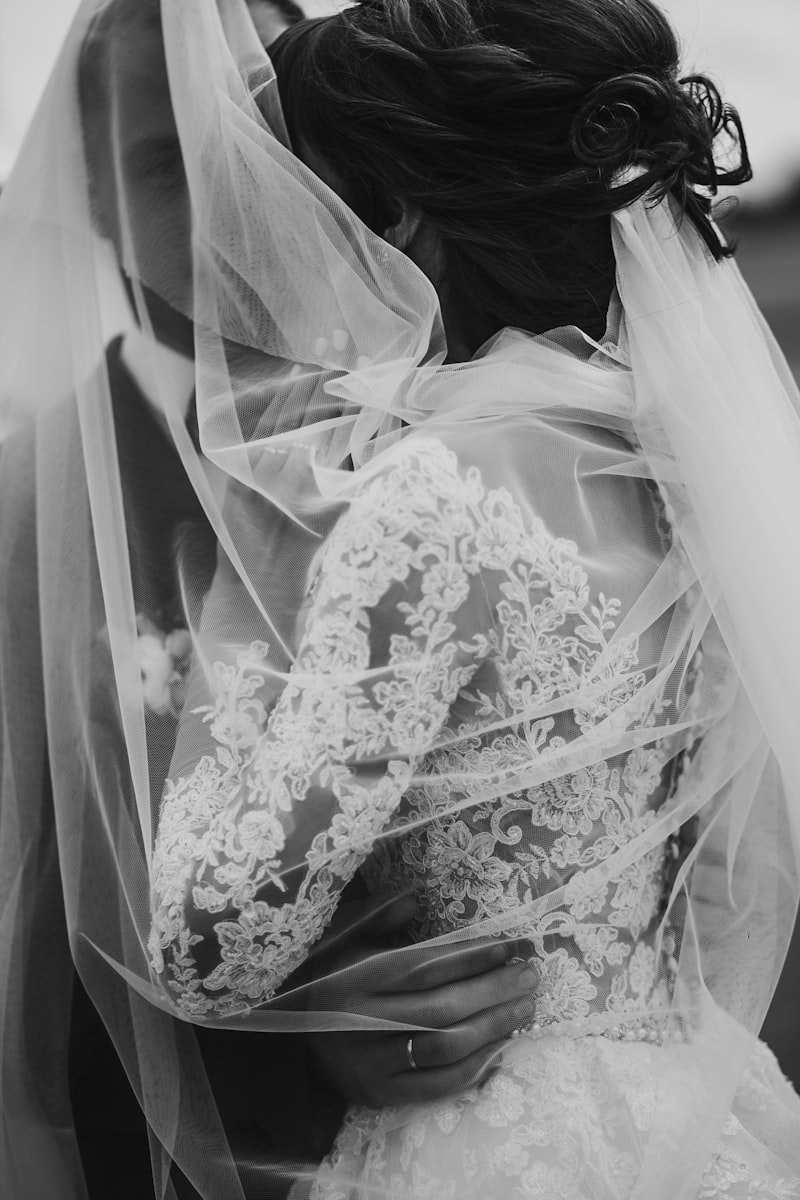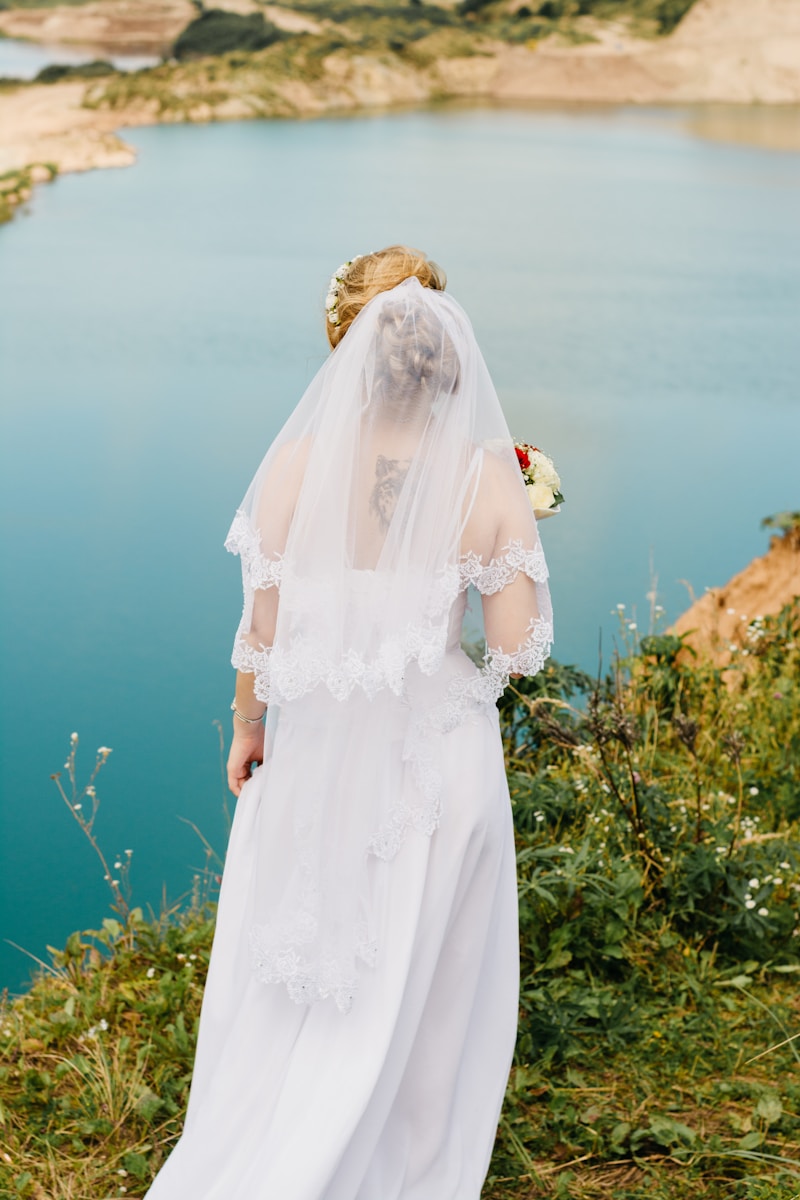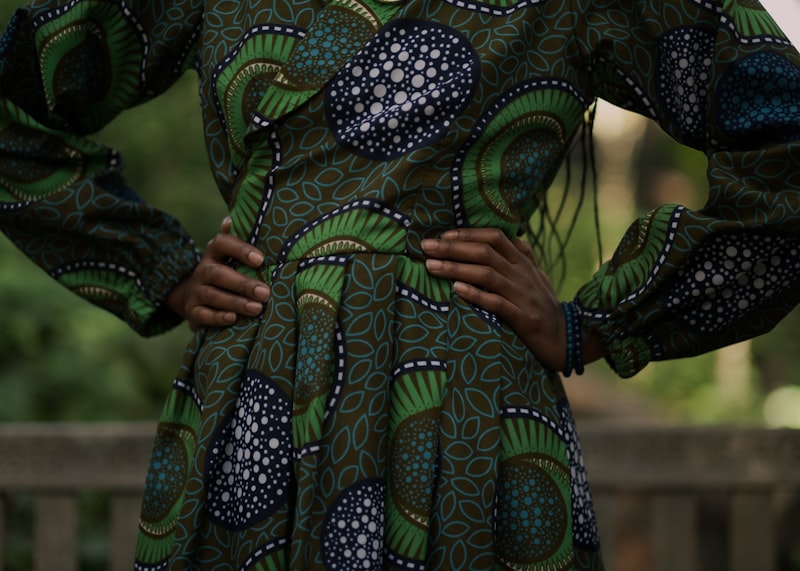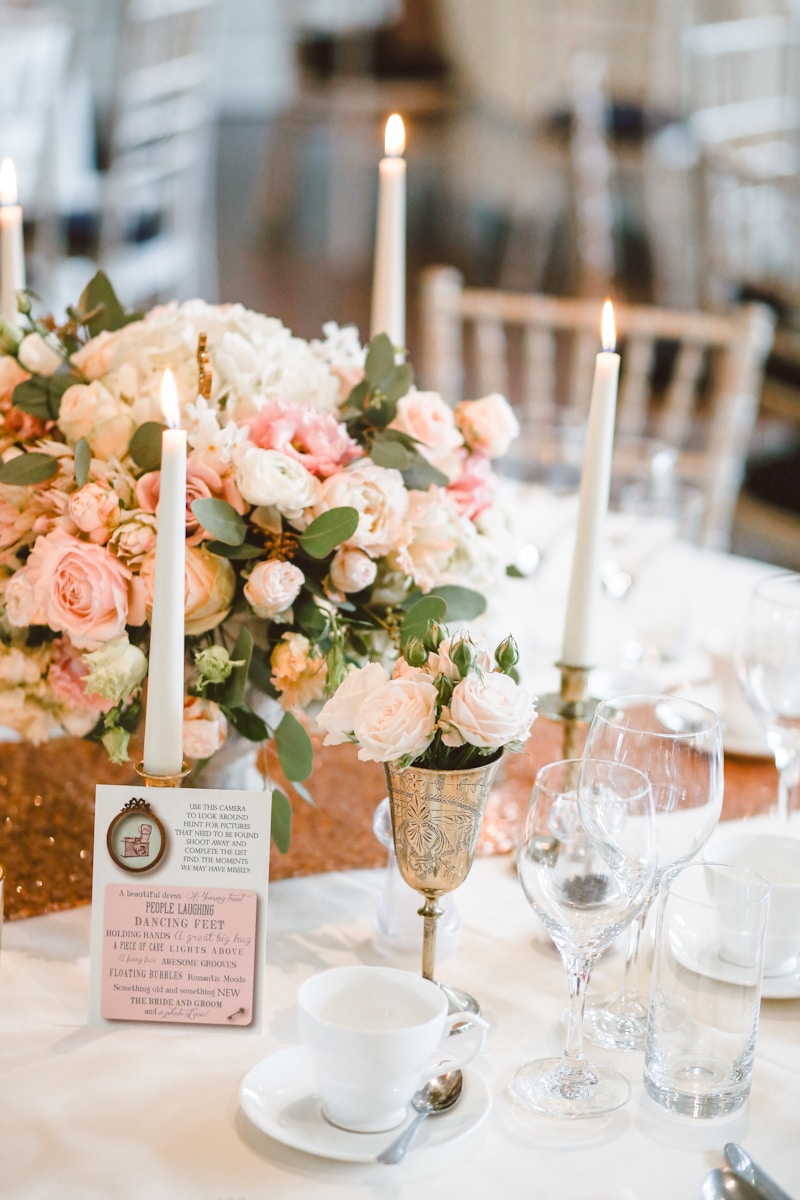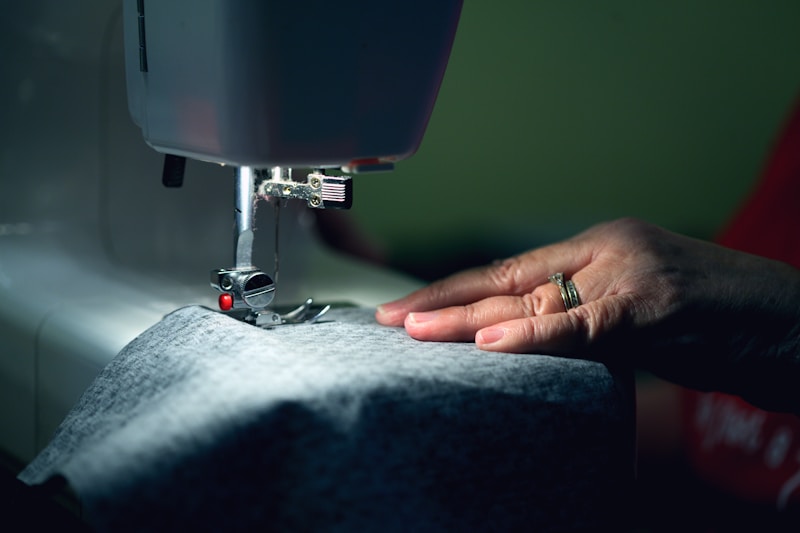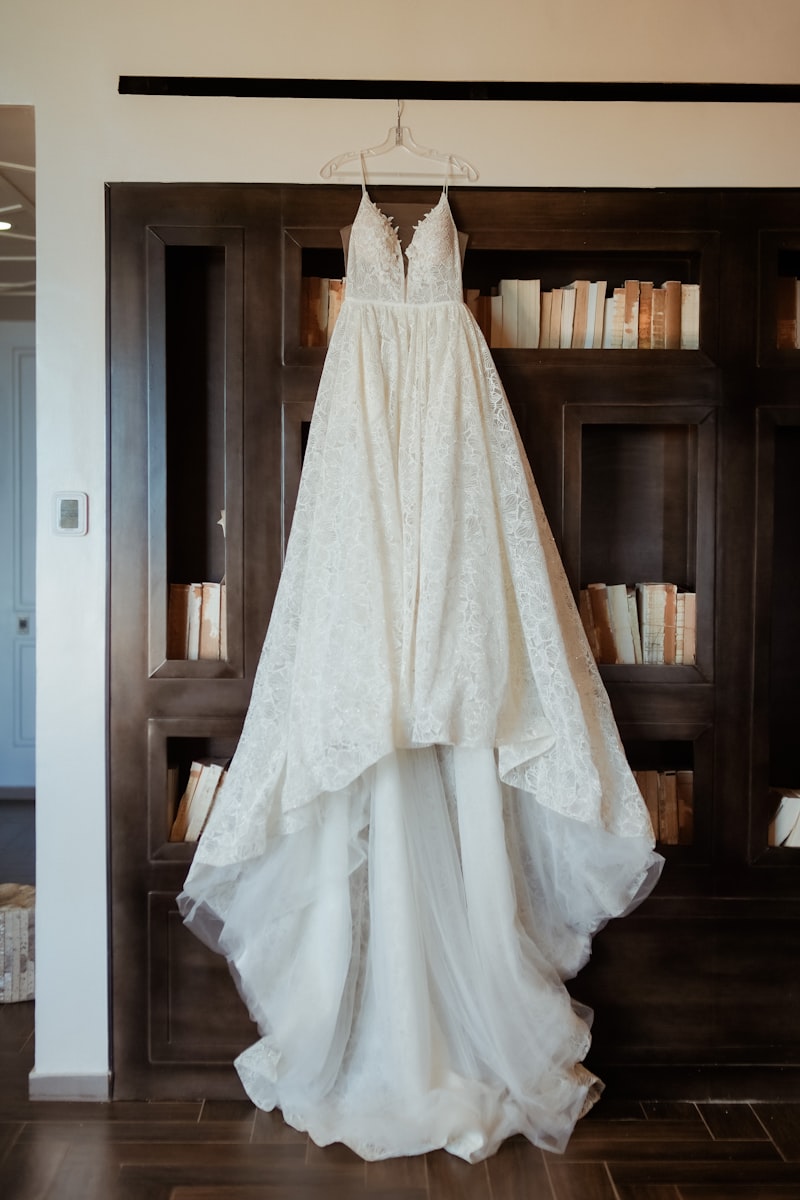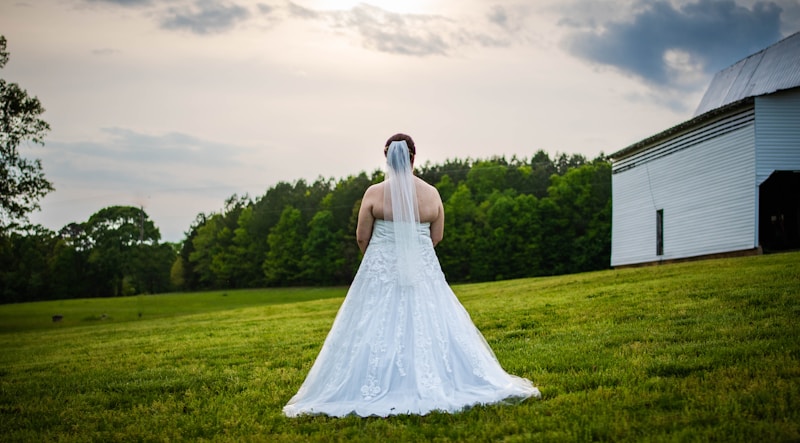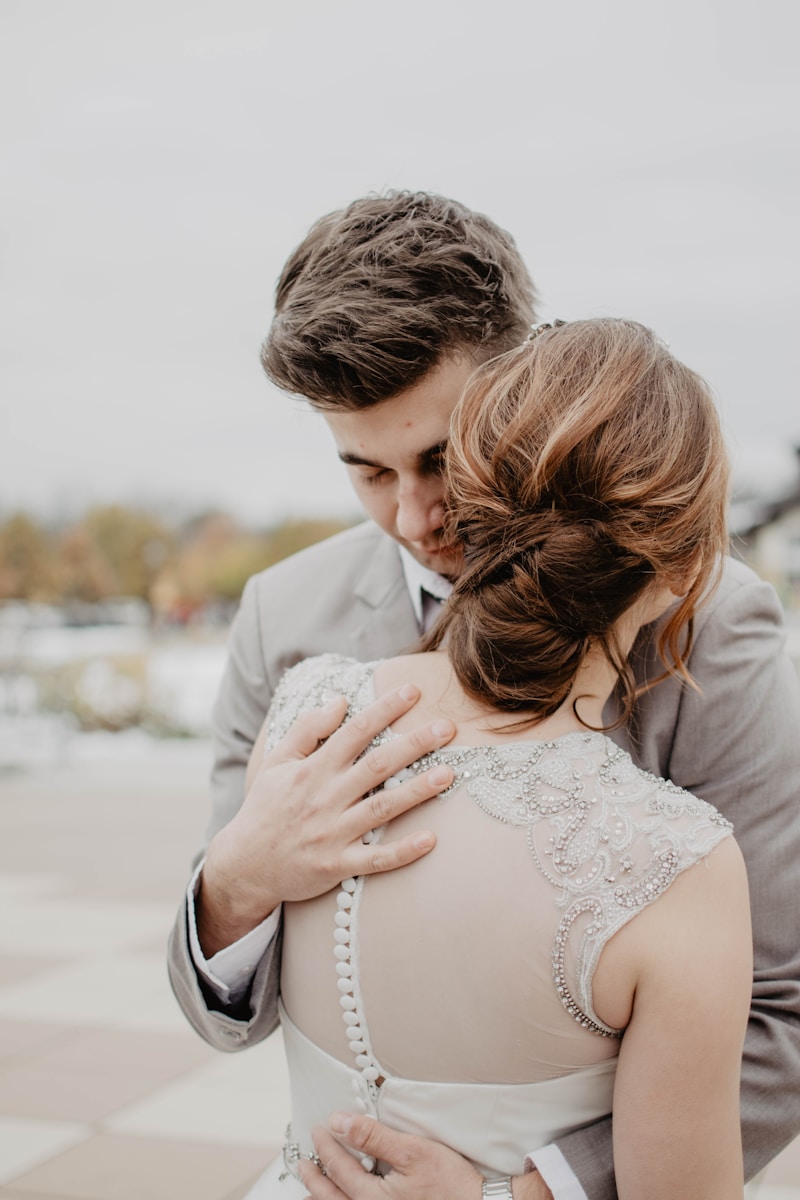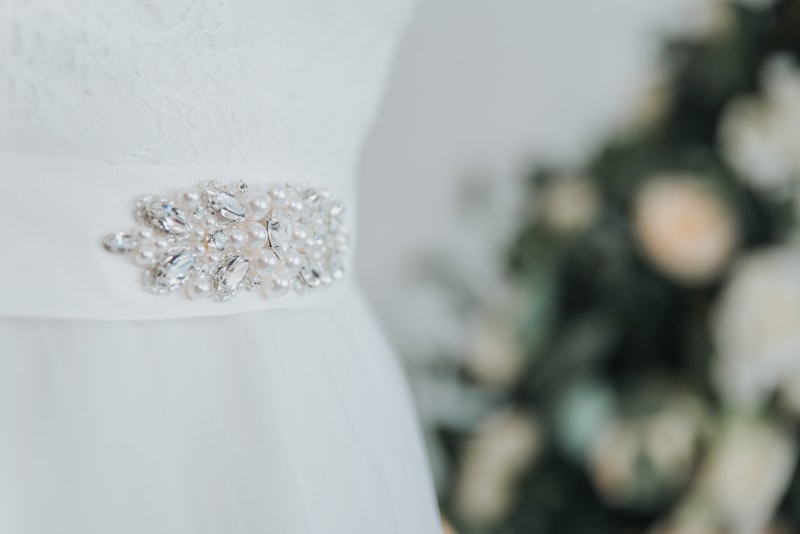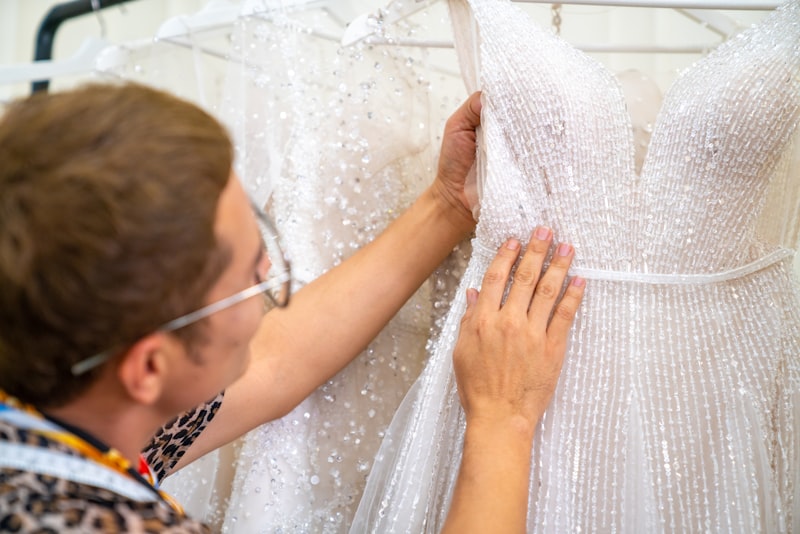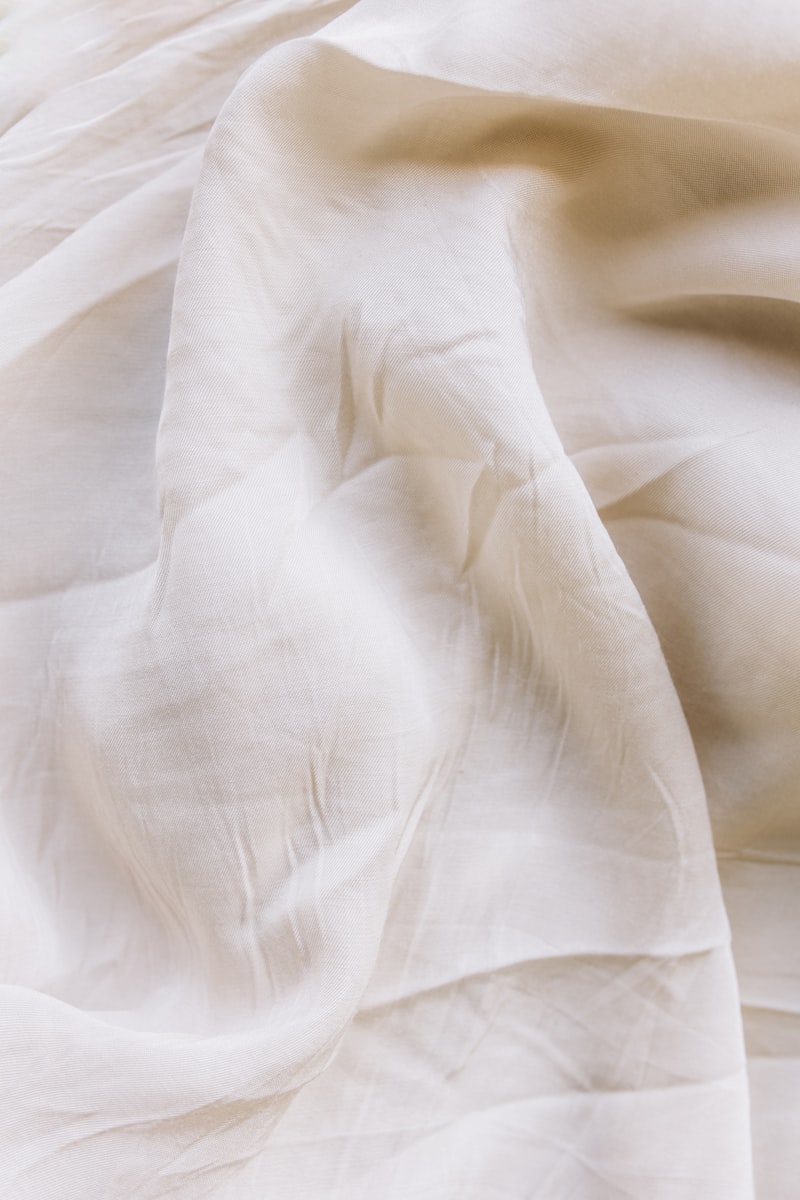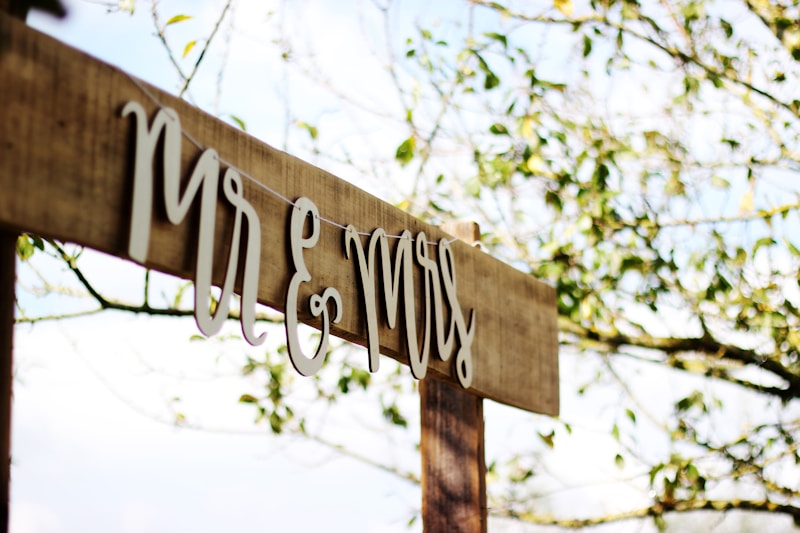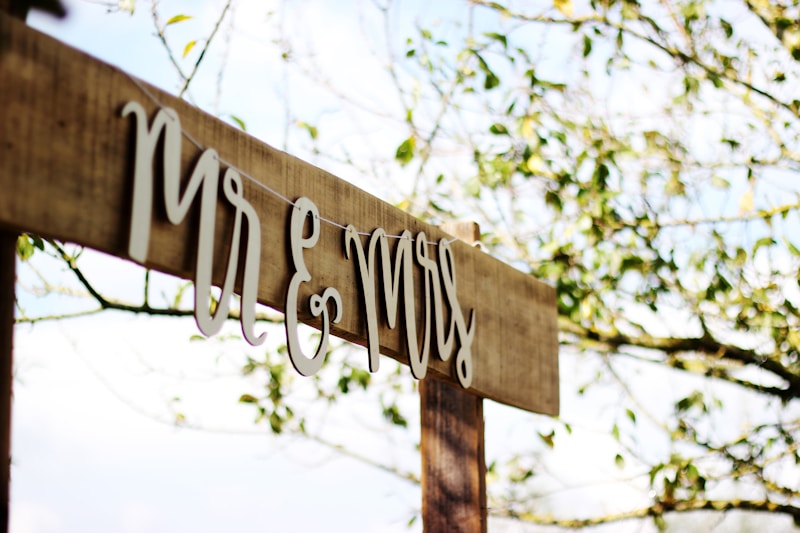How to Select Fabrics that Enhance Your Wedding Theme
Planning a wedding is a thrilling yet challenging experience, and one of the most significant aspects of any wedding is the overall theme. From rustic barn weddings to glamorous ballroom celebrations, the choice of fabrics plays a crucial role in enhancing your wedding theme. In this article, we will explore how to select fabrics that not only complement your wedding theme but also create an unforgettable atmosphere for you and your guests.The Importance of Fabric Selection in Wedding PlanningWhen it comes to planning a wedding, every detail matters. The fabrics you select can influence the look and feel of your entire event. They not only play a role in the aesthetic appeal but also in comfort, durability, and functionality. Here are some aspects to consider when choosing fabrics: Texture: Different fabrics have varying textures that can alter the ambiance of your wedding. Color: The color palette should harmonize with your theme and chosen fabrics. Durability: Fabrics should withstand the rigors of wedding festivities, especially for outdoor events.Understanding Different Fabric TypesWedding fabrics come in various types, each with its unique characteristics. Below are some popular fabrics to consider: Fabric Type Description Best For Chiffon A lightweight, sheer fabric known for its beautiful draping. Elegant gowns, soft curtains Satin A luxurious fabric with a glossy finish, ideal for for...
How to Choose Fabrics That Flatter Your Body Shape on Your Big Day
Your wedding day is one of the most significant events in your life, and choosing the right fabric for your dress can make all the difference. The fabric you select will not only determine the comfort level but also how well the dress complements your body shape. Understanding your body type and selecting the appropriate fabric that flatters your form can enhance your overall look, ensuring you feel gorgeous and confident as you walk down the aisle.Understanding Your Body ShapeBefore diving into fabric choices, it's essential to understand your body shape. Common body shapes include: Hourglass: Balanced shoulders and hips with a defined waist. Pear: Wider hips and thighs compared to the bust and shoulders. Apple: Broader shoulders and bust with a less defined waist. Rectangle: Similar widths across shoulders, waist, and hips with minimal curves. Inverted Triangle: Broad shoulders and bust with narrower hips.Knowing your body shape will guide you in selecting the ideal fabric that emphasizes your best features.Choosing the Right FabricsLet's explore various fabrics and how they flatter different body shapes.Body ShapeRecommended FabricsWhy It WorksHourglassSatin, chiffon, organzaHighlights curves and provides structurePearA-line skirts in tulle or silkAccentuates the waist while flowing over hipsAppleEmpire waist in soft jersey or draped fabricsProvides comfort and balances proportionsRectangleStructured fabrics like mikado or taffetaCreates curves and adds body...
How Fabric Weight Affects Custom Wedding Dress Comfort
The Importance of Fabric Weight in Custom Wedding DressesWhen planning a wedding, couples often focus on the venue, the guest list, and the stylish bouquet. However, one of the most significant decisions revolves around the bride's custom wedding dress. Among various factors, the weight of the fabric plays a critical role in determining the comfort level of the attire. In this article, we will explore how fabric weight influences comfort in custom wedding dresses, ensuring you'll be both stylish and at ease on your special day.Understanding Fabric WeightFabric weight is a measure of how much a material weighs per unit area, typically expressed in grams per square meter (GSM). The weight of the fabric can range from light sheers to heavy satin, impacting the overall drape, feel, and comfort of your wedding dress. Here is a breakdown of common fabric weights:Fabric TypeWeight (GSM)CharacteristicsLightweight60-100 GSMSoft, sheer, breathable; ideal for hot weather.Medium weight100-200 GSMVersatile; offers structure without being too heavy.Heavyweight200+ GSMLuxurious feel; suitable for formal wear and cooler climates.Why Fabric Weight MattersThe weight of the fabric can deeply influence not just the wedding dress's overall aesthetic but also how comfortable the bride feels throughout her big day. Let’s dive into several key factors where fabric weight matters:1. Climate ConsiderationsUnderstanding the weather conditions on your wedding day is crucial. For summer weddings, lightwe...
Choosing the Right Underlining Fabrics for Custom Wedding Dresses: A Comprehensive Guide
When it comes to creating the perfect custom wedding dress, the choice of underlining fabric is crucial. This often-overlooked element can significantly affect the overall look, feel, and structure of the gown. In this article, we will delve into the various types of underlining fabrics, their applications, and how to choose the one that best suits your bridal vision.Understanding Underlining FabricsUnderlining fabrics are typically used to support the main fabric of the dress. They provide additional structure, durability, and can also influence the drape and flow of the garment. Choosing the right underlining fabric can enhance the beauty of the overall design, ensuring that the bride feels comfortable and confident on her very special day.Common Types of Underlining FabricsSeveral types of fabrics are commonly used for underlining in custom wedding dresses. Let’s explore some of the most popular options:Fabric TypeCharacteristicsBest UsesMuslinLightweight, breathable, and inexpensivePerfect for mock-ups and experimentsCotton BatisteSoft, lightweight, and provides good drapeIdeal for flowy, romantic silhouettesOrganzaSheer, crisp, adds volume and structureBest for ball gowns and layered skirtsSatinLuxurious, smooth; heavier than other optionsGreat for more structured designsTulleLight, airy, and somewhat stiffUsed for creating volume and shape in skirtsFactors to Consider When Choosing Underlining FabricsHaving understood the common types of underlining fabrics, here are se...
Understanding the Differences Between Tulle and Organza for Wedding Dresses
When it comes to choosing the perfect wedding dress, there are numerous fabric options to consider. Two of the most popular choices are tulle and organza. Both fabrics have unique qualities that can significantly affect the overall look and feel of your wedding gown. In this article, we will explore the differences between tulle and organza, helping brides-to-be make informed decisions for their special day. Furthermore, we'll discuss other related aspects, such as cost, maintenance, and styling choices.What is Tulle?Tulle is a lightweight, nylon or silk netting fabric known for its soft texture and structure. It is often used in skirts, veils, and decorative accents. Tulle comes in a variety of colors and styles, from soft pastel shades to bold, vibrant hues. One of its standout features is its ability to hold shape, making it a popular choice for creating voluminous skirts or layers. Characteristics of Tulle Lightweight and airy: Tulle's delicate nature gives it an ethereal look, ideal for whimsical wedding themes. Structured yet flexible: This fabric maintains its shape while still being soft enough to flow beautifully. Variety of colors: Tulle can easily be dyed, which allows for a wide range of color choices for brides.What is Organza?Organza is a thin, plain weave fabric made from silk or synthetic fibers. It is a stiffer material compared to tulle, providing a more formal and polished look. Organza is often used in overlays, accents, and even entire gowns, esp...
Ultimate Styling Tips for Mixing Fabrics in Custom Wedding Dress Designs
Weddings are one of the most significant occasions in our lives, and brides want to look their absolute best on this special day. One of the key elements that contribute to a stunning wedding dress is the choice of fabrics. Mixing fabrics can elevate a custom wedding dress design and create a unique look tailored to the bride's personality. In this article, we'll explore styling tips for mixing fabrics in custom wedding dress designs, and how to achieve the perfect balance for a breathtaking bridal gown.Understanding Fabric Types and Their Characteristics Before diving into the mixing techniques, it’s essential to understand different fabric types and their characteristics. Here are some common fabrics used in custom wedding dress designs:Fabric TypeCharacteristicsBest UseSatinLuxurious and smooth with a slight sheen.Formal wedding gowns.TulleLightweight, airy, and sheer.Layered skirts and veils.LaceDelicate, intricate designs often used for overlays.Adding vintage charm.ChiffonSoft, flowing, and lightweight.Creating volume without bulk.OrganzaStiff, crisp fabric that adds structure.Overlaying or for dramatic silhouettes.Tips for Mixing Fabrics Effectively Now that you’re familiar with various fabrics, here are some key tips for mixing them effectively in custom wedding dress designs:1. Consider the Dress Silhouette When mixing fabrics, the silhouette of the dress plays a significant role. For instance, if you opt for a ball gown silhouette, combining structured fabrics like...
Customizing Your Dress: Mixing Traditional and Contemporary Fabrics
Introduction to Customizing Your DressIn today's fashion world, customizing your dress has become a popular trend that allows individuals to express their unique style. One of the most exciting approaches is the art of mixing traditional and contemporary fabrics. This article will explore the benefits of customization, tips on choosing the right fabrics, and how to seamlessly blend these two worlds to create a stunning and personal dress.Why Customize Your Dress?Customization not only enhances the appeal of your outfit but also ensures that it reflects your personality and taste. Here are a few reasons why customization is a great choice: Unique Style: A customized dress is one-of-a-kind, offering you the opportunity to stand out at any event. Perfect Fit: Tailoring your dress ensures a perfect fit that flatters your body type. Personal Touch: Incorporating fabrics that have personal significance can add emotional value to your outfit.Understanding Traditional and Contemporary FabricsTo effectively mix fabrics, it’s essential to understand what traditional and contemporary fabrics entail:Traditional FabricsTraditional fabrics often reflect cultural heritage and craftsmanship. Examples include:FabricCharacteristicsSilkLuxurious, soft, and often used in celebration wear.BrocadeFeatures intricate patterns and designs, perfect for elegant occasions.CottonBreathable and comfortable; widely used in ethnic wear.Contemporary FabricsOn the other hand, contemporary fabrics are moder...
Choosing the Perfect Color Palette for Bridal Fabrics: A Comprehensive Guide
Choosing the perfect color palette for bridal fabrics is a crucial step in creating the dream wedding. The right colors can evoke emotions, set the tone for the entire event, and resonate with the couple’s personal style. As the wedding industry continues to grow, so too does the range of color options available to brides and grooms. This article will guide you through the process of selecting the ideal color palette, taking into consideration trends, seasonality, and even cultural implications, while also addressing common questions couples may have.The Importance of Color in Bridal FabricsColors are powerful. They can influence mood, atmosphere, and even perception. When it comes to weddings, the color palette you choose for your bridal fabrics plays an integral role in the overall aesthetic of your special day. This is especially true for key elements such as:Wedding gownsBridesmaid dressesFloral arrangementsTable linensDecoration and venue stylingThus, selecting the right colors can not only enhance the visual appeal of the wedding but also create lasting memories for the couple and their guests.Current Trends in Bridal Fabric ColorsThe color trends for bridal fabrics often shift with the seasons and societal influences. For instance, pastels were dominant in the spring and summer seasons, while rich jewel tones have gained popularity in autumn and winter weddings. Here are some trending colors to keep in mind:ColorSeasonDescriptionSoft BlushSpring/SummerA gentle, romanti...
Inspiration from Nature: Floral Fabrics for Romantic Bridal Gowns
When it comes to wedding attire, one trend that stands out with elegance and charm is the use of floral fabrics for bridal gowns. The intricate designs and colors often mirror the beauty of nature, making floral fabrics a favorite among brides looking for a romantic aesthetic. In this article, we explore the allure of floral fabrics, why they make perfect bridal choices, and how to incorporate them into your wedding day style. The Appeal of Floral Fabrics Floral patterns evoke a sense of freshness and serenity. They are synonymous with love and growth, making them a perfect choice for the celebration of matrimony. Brides searching for inspiration from nature will find that floral fabrics come in various styles, from delicate prints to bold, oversized blooms. Here we will examine a few noteworthy aspects of floral fabrics that make them so appealing: Versatility: Floral fabrics come in countless colors and styles, making it easy for brides to find a design that fits their wedding theme, whether it’s a bohemian garden affair or a classic ceremony. Trendy Options: Many designers are currently embracing floral patterns, ensuring that brides can find modern and chic gowns with floral elements. Connection to Nature: In today’s world, many brides are seeking deeper connections to nature and sustainability, and floral fabrics often align with these values. Types of Floral Fabrics Brides have an extensive choice when it comes to floral fabrics. Each type of fabric offers ...
Accessorizing with Fabrics: Choosing the Right Materials for Veils and Sashes
When it comes to enhancing your outfit, the right accessories make all the difference, especially when it involves fabrics like veils and sashes. Each piece serves as a canvas, allowing you to express your personal style while thoughtfully elevating your overall look. As you embark on this textile journey, understanding the various materials at your disposal is crucial. In this article, we will explore how to choose the right fabrics for veils and sashes, helping you make informed decisions that reflect your aesthetics and preferences.The Importance of Fabric ChoiceThe choice of fabric is paramount when it comes to veils and sashes. Not only do they contribute to the visual appeal of your outfit, but they also affect comfort, drape, and overall impression. For instance, lightweight fabrics can provide an ethereal look, while heavier materials can add structure and volume. Let's take a closer look at some of the popular fabric options available and their characteristics.Fabric TypeCharacteristicsBest UseTulleLightweight, sheer, and slightly stiff.Veils for weddings or special occasions.SilkLuxurious, soft, and smooth.Elegant sashes and flowing veils.ChiffonDelicate, flowing, and lightweight.Sashes and veils for romantic themes.OrganzaStiff and sheer, offers structure.Structured veils or statement sashes.VelvetSoft, plush, and opulent.Rich, dramatic sashes for cooler seasons.Selecting the Right Materials for VeilsVeils play a significant role in formal attire, particularly in w...
The Timeless Appeal of Silk in Custom Bridal Fashion
When it comes to weddings, one of the most significant choices a bride makes is her wedding dress. Among the myriad of fabrics available, silk holds a unique and timeless appeal, especially in custom bridal fashion. This article will explore the reasons behind silk's enduring popularity, its advantages over other materials, and how it can be incorporated into various wedding styles. We will also answer some frequently asked questions about silk bridal wear. The Allure of Silk: A Brief Overview Silk has been revered for centuries, lauded for its luxurious texture and lustrous finish. This natural fiber, produced by silkworms, is not only beautiful but also incredibly versatile. Its history can be traced back to ancient China, where it was considered a luxury item. Today, silk remains a favorite among brides, embodying elegance, romance, and sophistication. Why Choose Silk for Your Bridal Attire? There are several compelling reasons why many brides opt for silk when designing their custom wedding dresses. AdvantageDescription Luxurious FeelSilk's soft texture feels delightful against the skin, providing comfort on your special day. Beautiful DrapingSilk fabric drapes beautifully, creating a stunning silhouette that flatters any body type. Timeless AppealThe classic look of silk never goes out of style, making it a wise choice for enduring elegance. Easy to DyeSilk readily absorbs dye, allowing for a wide range of colors to suit your wedding theme. DurabilityDespit...
Texture and Flow: The Art of Material Selection in Wedding Gowns
Choosing the perfect wedding gown is one of the most exciting parts of wedding planning. Among the many factors to consider, texture and flow play pivotal roles in determining how a gown looks and feels. For brides navigating this intricate decision, understanding fabric types, the importance of draping, and how these elements influence the overall aesthetic of the gown is essential. In this article, we will delve into the nuances of material selection in wedding gowns, exploring various textures and flow styles to help brides make informed decisions.Understanding Texture in Wedding GownsTexture refers to the surface quality of the fabric used in bridal gowns. It can influence the dress's appearance and how it interacts with light, affecting everything from the overall visual appeal to the comfort level for the bride. There are several key textures commonly seen in wedding dresses:Texture TypeDescriptionSilkLuxurious and smooth, silk offers a soft feel with a natural sheen, perfect for glamorous gowns.LaceIntricate and romantic, lace adds a vintage charm and delicate touch to any wedding dress.ChiffonLightweight and sheer, chiffon creates an ethereal look with a soft, flowing drape.TaffetaStructured and crisp, taffeta is ideal for gowns that require a bit more formality and volume.OrganzaSimilar to chiffon but stiffer, organza can give depth and volume to gowns while maintaining a light feel.Each texture carries its own character and can complement different wedding themes an...
How to Layer Fabrics for a Unique Look in Custom Bridal Wear
When it comes to custom bridal wear, layering fabrics can create a stunning and unique look that reflects a bride's personal style. With the right techniques and fabric combinations, you can achieve a gown that stands out on one of the most important days of a woman's life. Whether you're a designer, a DIY bride-to-be, or an enthusiast, understanding how to layer fabrics effectively is key. This article will explore the various aspects of layering fabrics for custom bridal wear, providing you with valuable insights, tips, and inspiration.The Importance of Fabric SelectionBefore we dive into the layering techniques, it's essential to understand the different types of fabrics commonly used in bridal wear. Each fabric has its unique characteristics that influence how it will look when layered.Fabric TypeCharacteristicsBest ForSatinGlossy, smoothElegant gowns and dressesLaceSheer, delicateOverlay for vintage or romantic looksTulleLightweight, airyVolume and structure in skirtsChiffonSoft, flowingLayers for a dreamy effectOrganzaStiff, clearStructural layers for added dimensionChoosing the Right Color PaletteWhen creating a custom bridal look, color is just as important as fabric. Choosing the right color palette can enhance the aesthetic of the gown. Many brides opt for classic whites, creams, and pastels, but incorporating colors through layering can add depth and personality to a gown. Here are some tips on choosing your colors:Monochromatic schemes: Layer different shades of t...
Expert Tips for Pairing Fabrics in Custom Wedding Dress Designs
Designing a custom wedding dress is one of the most exciting aspects of preparing for a wedding. The right fabric can enhance the beauty of the gown and help convey the bride's unique style. In this article, we'll delve into essential tips for pairing fabrics in custom wedding dress designs, ensuring that your choice complements both the design and the wearer.Understanding Fabric TypesBefore diving into pairing tips, it's crucial to understand the various types of fabrics commonly used in wedding dresses. Each fabric has its unique properties, which can influence the overall look and feel of the gown. Here's a brief overview:Fabric TypeCharacteristicsBest ForSatinShiny, smooth, and luxuriousA-line or ball gown stylesTulleLightweight, sheer, and airyLayers and veilsLaceDelicate and intricate patternOverlay and detailingChiffonSoft, flowing, and lightweightA-line and sheath dressesOrganzaStiff, translucent, and crispLayers and structureTips for Pairing Fabrics1. Consider the Dress SilhouetteWhen pairing fabrics, the first consideration should always be the silhouette of the dress. For example, a flowing A-line silhouette looks stunning with chiffon or tulle, while a fitted mermaid style may call for satin or lace overlays to enhance curvature and definition. Think about how different fabrics drape and how they will combine with the shape of the gown.2. Harmonize TexturesTexture plays a significant role in fabric pairing. Combining fabrics with varying textures can create a visu...
Silk vs. Satin: Which is Best for Your Wedding Gown?
Understanding the Finishes: Silk vs. SatinChoosing the perfect fabric for your wedding gown is a crucial decision that can impact not only the look but also the feel of your special day. Two of the most popular fabric choices for wedding gowns are silk and satin. But which one is truly the best for your wedding gown? In this article, we will delve into the differences, benefits, and considerations of both fabrics to help you make an informed choice.The Basics: Silk and Satin DefinedBefore we delve deeper, it's important to understand what silk and satin are. Silk is a natural fiber produced by silkworms, known for its luxurious texture and sheen. Satin, on the other hand, can be made from various materials, including polyester, silk, or nylon, and is characterized by its glossy surface and dull back. While sometimes used interchangeably in everyday conversation, these materials have distinct qualities.satin wedding gownAppearance: How Do They Look?When it comes to the appearance of your wedding gown, both silk and satin possess unique aesthetic features. Silk offers a soft, elegant drape and an unmatched natural luster that catches the light beautifully. It often feels more delicate and adds an air of sophistication. Satin, while also shiny, tends to have a polished glossy surface that can create a more structured silhouette, perfect for modern designs.FabricAppearanceTextureWeightCostSilkLuxurious sheen, soft drapeSoft, smoothLight to mediumHigherSatinGlossy finish, formal l...
Personalizing Your Wedding Dress with Unique Material Choices
The wedding day is one of the most significant events in a person's life, a day filled with love, joy, and unforgettable moments. When it comes to preparing for this special day, selecting the perfect wedding dress is often at the top of the to-do list. For many brides, finding a dress that not only looks beautiful but also reflects their individuality is paramount. In this article, we will explore how you can personalize your wedding dress with unique material choices, creating a garment that tells your unique love story.Understanding the Importance of Personalization in Wedding DressesEvery bride envision’s her wedding day differently, and similarly, every bride deserves a wedding dress that echoes her style, personality, and story. Personalization transforms a standard dress into a functional piece of art that feels personal. In today’s modern age, brides are moving away from traditional designs and opting for wedding dresses that blend unique materials with different styles for a truly bespoke look.Exploring Unique Material Choices for Your Wedding DressWhen delving into the world of wedding dress materials, the choices can be overwhelming. Here, we will outline some of the most unique materials that can elevate your wedding gown to new heights, keeping individuality at the forefront.MaterialDescriptionBenefitsChiffonA lightweight, sheer fabric with a flowy texture.Provides an ethereal and romantic look; ideal for layered dresses.VelvetA lush fabric that emanates elegance...
Examining the Durability of Different Fabrics for Long-Lasting Wedding Gowns
Understanding Fabric Durability in Wedding GownsChoosing the right fabric for a wedding gown is essential for brides who want to look stunning on their special day while ensuring the longevity of their gown. This comprehensive guide examines the durability of various fabrics, providing insights into their strengths, weaknesses, and maintenance requirements. By understanding these aspects, brides can make informed decisions about their wedding attire.Factors Influencing Fabric DurabilityWhen it comes to selecting the perfect fabric for a wedding gown, several factors affect durability: Fiber Content: The type of fibers used in the fabric plays a crucial role in determining its strength and lifespan. Weave Type: Different weaving techniques can enhance or diminish the durability of the fabric. Weight of the Fabric: Heavier fabrics tend to be more durable than lighter ones. Finish and Treatment: Some fabrics undergo special treatments that increase their durability.Popular Fabrics for Wedding Gowns Fabric Type Durability Care Instructions Satin Moderately durable, can snag Dry clean recommended Silk Highly durable, delicate when wet Dry clean only Tulle Moderate durability, can tear easily Hand wash with care Lace Moderately durable, delicate design Dry clean or hand wash suggested Organza Durable but can w...
The Role of Fabric Texture in Wedding Dress Customization
The journey towards the perfect wedding dress is deeply personal and filled with choices that reflect a bride’s individuality. Among these choices, the fabric texture plays a crucial role in the customization process, influencing not only the aesthetic appeal but also the functionality of the dress. In this article, we will explore how fabric texture affects wedding dress customization, the various types of fabrics available, and tips for selecting the right texture for your dream dress. Understanding Fabric Texture Fabric texture refers to the surface quality of a material, which can be smooth, rough, shiny, or matte. It contributes significantly to the overall appearance and feel of a wedding dress. Choosing the right texture can enhance the design intricacies, lend depth to the garment, and facilitate comfort during the ceremony and celebration. Fabrics also behave differently in terms of draping, fit, and how they interact with light. This means that the right texture can elevate the bride's presence on her special day. Types of Textures and Their Impact on Customization Fabric TypeTextureImpact on Wedding Dress SilkSmooth & ShinyCreates a luxurious look, drapes beautifully, and enhances intricate designs. LaceIntricate & DelicateAdds a romantic and vintage touch, ideal for layering and details. OrganzaCrisp & LightOffers a structured silhouette, perfect for voluminous designs. TulleSoft & SheerUsed for skirts and veils, providing a whimsical appearance. Velv...
Exploring Eco-Friendly Fabric Options for Sustainable Weddings
Why Choose Eco-Friendly Fabrics for Your Wedding?As couples increasingly seek to incorporate sustainable practices into their big day, choosing eco-friendly fabrics for wedding attire has never been more relevant. The wedding industry is known for its potential to generate waste and consume resources, but by selecting sustainable fabric options, couples can minimize their environmental impact while still achieving the wedding of their dreams.Understanding Eco-Friendly FabricsEco-friendly fabrics are textiles that have been produced with minimal environmental impact. They are often made from organic materials, use less water, or are crafted through ethical labor practices. Examples include organic cotton, bamboo, hemp, and recycled materials. Understanding these options is crucial for couples who wish to plan a sustainable wedding.Popular Eco-Friendly Fabric OptionsFabricDescriptionBenefitsOrganic CottonNon-GMO cotton grown without harmful pesticides.Soft, breathable, and sustainable.BambooA fast-growing grass that naturally replenishes.Biodegradable, moisture-wicking, and soft.HempOne of the most sustainable fabrics available.Durable, UV resistant, and requires less water.Recycled PolyesterMade from recycled plastic bottles and textiles.Reduces waste and creates a unique texture.Peace SilkSilk produced ethically without harming silkworms.Luxurious feel while promoting animal rights.Benefits of Choosing Eco-Friendly Fabrics for WeddingsCouples contemplating an eco-friendly wed...
Adapting Fabric Choices for Different Wedding Venues
Weddings are one of the most significant events in a person's life, and choosing the right fabric for the attire is essential. The fabric not only enhances the beauty of the outfit but also complements the wedding venue. Hence, understanding how to adapt fabric choices for different wedding venues can lead to a more harmonious and elegant celebration. Whether it’s a beach wedding, a rustic barn ceremony, or a luxurious ballroom event, selecting the appropriate fabric is crucial. Understanding Fabric Choices When it comes to choosing the fabric for wedding attire, various factors come into play, including the theme, season, and most importantly, the venue. Each type of fabric offers different qualities; for example, lightweight fabrics are ideal for outdoor summer weddings, while heavier materials are perfect for indoor winter ceremonies. Below is a table outlining common wedding venues and corresponding fabric recommendations: Wedding Venue Recommended Fabrics Beach Wedding Chiffon, Linen, Cotton Barn Wedding Lace, Tulle, Organza Ballroom Wedding Satin, Silk, Mikado Garden Wedding Georgette, Brocade, Jersey City Hall Wedding Cotton Satin, Crepe, Polyester Beach Weddings: Embracing Light Fabrics Beach weddings are often characterized by their casual yet romantic atmosphere. The choice of fabric should reflect the light, breezy nature of the setting. Fabrics like chiffon, linen, and cotton are ideal for beach weddings as they allow ...
